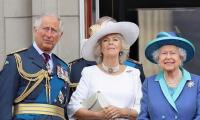His journey was fraught with difficulties and unforeseen challenges. The political and ethnic landscapes of the era harboured an agenda that rendered his ambitious vision nearly unattainable. However, the indomitable spirit of the man prevailed. Mir Saheb remained unwavering in his determination. His vision was to establish a state-of-the-art news organisation, and to achieve this, he tirelessly dedicated himself day and night to enhancing the techniques of news reporting. Additionally, he introduced cutting-edge technologies in newspaper publication.
It became apparent that innovation and revolution were driving forces in Mir Saheb's endeavours. One of his most notable contributions was the pioneering introduction of computerised composing for newspapers. By incorporating computerised Noori Nastaleeq in his newspaper, he became the first to embrace this technological advancement at the time. This groundbreaking initiative distinctly set Jang apart from its contemporaries. Subsequently, other newspapers, inspired by Jang's lead, also adopted this revolutionary technology.
He possessed expertise in photography, recognising the significance of compelling images that not only adorned news stories but, at times, became the news itself.
Mir Saheb held the belief that the key to increasing a newspaper's circulation lay in maximising its readability, ensuring it reached the broadest spectrum of society. Consequently, Jang consistently outperformed others in delivering exclusive news scoops, being the first to seize upon any novel information of national importance.
Poetry enthusiasts found delight in the verses of Rais Amrohvi, while Majeed Lahori's Wagharia Wagharia Column entertained readers with its unwavering humour. The newspaper featured articles and opinion pieces of a high standard, catering to diverse tastes. Simultaneously, the editorials maintained a mild tone, avoiding harsh critiques or excessive emotion, except when addressing matters of national defense or the ideology of Pakistan.
In terms of production quality, the newspaper once again set industry standards by introducing cutting-edge printing machines imported from Germany. This innovation ensured flawless printing quality. Additionally, the ink used in the paper was of such high quality that it never stained the clothes or hands of the readers.
Jang became an integral part of breakfast in numerous households, where eager readers awaited the paper for its exclusive news coverage and thought-provoking opinion pieces.
Mir Saheb was acutely aware of the newspaper's appeal to its readership. To expand its geographical reach, he strategically established a well-connected network of dedicated hawkers throughout the country. These hawkers were not only qualified and efficient but also played a crucial role in discovering new avenues of growth. They strengthened the distribution network by ensuring that Jang reached every corner where its readership existed.
Mir Saheb was an approachable individual, readily accessible to his columnists, employees, and readers alike. Notably, he placed great emphasis on taking care of the needs of his employees. Guided by a set of principles, he refrained from using his authority to exert pressure or adopting a harsh tone when communicating with his subordinates. Instead, he adhered to the principle that effective communication involves skillfully expressing one's point without stating the obvious or resorting to harshness, believing that adept communication could convey everything without unnecessary confrontation.
Naqvi has mandated DG FIA to architect comprehensive and unyielding strategy against burgeoning issue of illegal...
34 government bills included 12 introduced in the Senate itself and 22 received from the National Assembly
A case has been registered against Assad Qaisar at Industrial Area Police Station
Gandapur says his administration had already achieved significant progress through improved policies
Nabeel says staff should be recruited as per requirement on merit
Chief Election Commissioner reminded Gohar that they were supposed to present arguments







